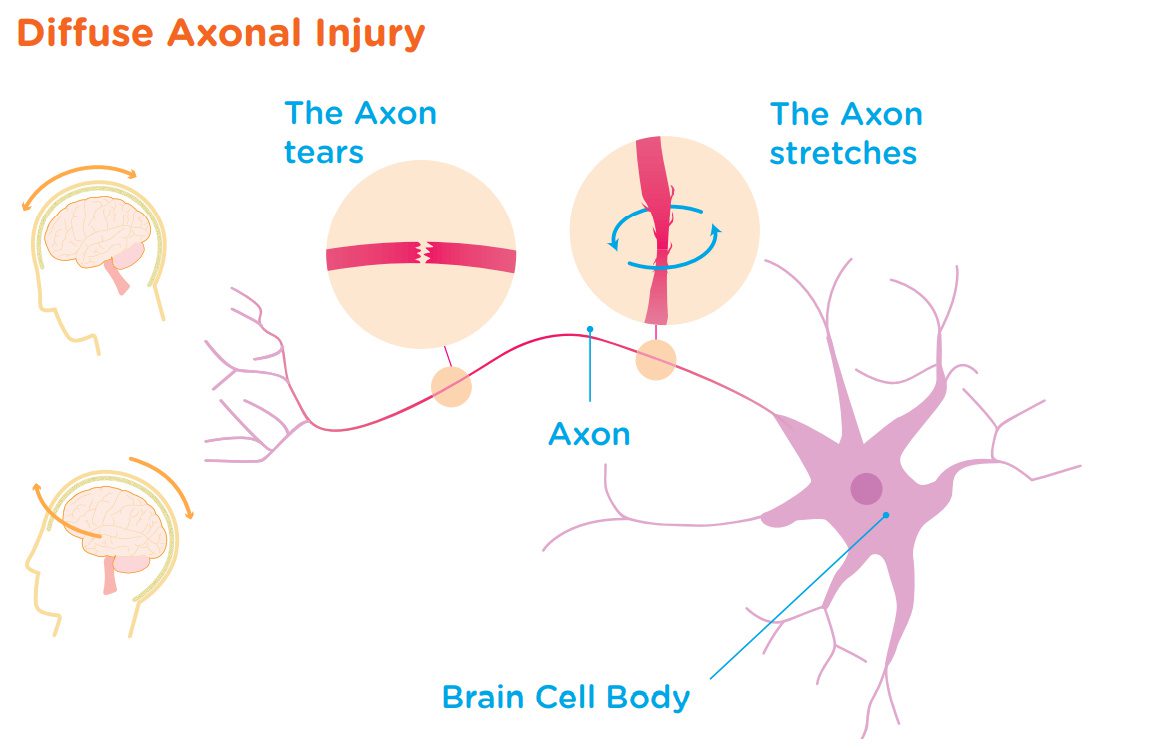A Traumatic Brain Injury happens when an outside force is applied to the brain, or body, that affects the brain’s functioning. Common causes of a traumatic brain injury include car crashes, assaults, falls, sport accidents or an object penetrating the skull. The degree of damage following a Traumatic Brain Injury can depend on several factors, including how the injury happened and how much force was involved.
What happens in a Traumatic Brain Injury (TBI)?
A TBI may include one or more of the following:
1. Burst blood vessels inside the skull. This results in bruises or bleeding – for example:
- A Contusion – a bruise on the brain caused by blood leaking from tiny vessels.
- A Haematoma – a pool of blood that develops when a vessel bursts in or around the brain. Sometimes surgery is performed to remove haematomas as they can cause pressure to build up inside the skull.
- A Brain Haemorrhage – bleeding in, or around, the brain when a blood vessel tears or bursts
2. Swelling (Oedema) is the body’s response to many injuries. Brain swelling can be serious because the skull cannot stretch as the brain gets bigger. As pressure builds up, the brain presses against the skull. This can make the person affected seriously ill or can even cause death. Swelling of the brain can occur hours, or days, after the initial injury.
3. A Skull Fracture is any break or crack in the bones of the skull. A fracture can cause damage to the brain’s protective layers, blood vessels or the brain itself.
4. A Diffuse Axonal Injury (see below) results from the brain rapidly moving back and forth, and twisting, in the skull. This causes stretching and/or tearing of the brain cell fibres (axons). A diffuse axonal injury can also cause brain cells to die which results in swelling.
Diffuse Axonal Injury
This type of injury is called ‘diffuse’ because it is spread over a large area of the brain.

Brain Scans
Brain scans allow doctors to ‘see’ inside our brain. A scan can locate the areas of the brain affected by an injury. CT and MRI scans are the most used types. CT stands for ‘Computerised Tomography’ and MRI stands for ‘Magnetic Resonance Imaging’. However, not all brain injuries are visible on routine scans. The severity of a Traumatic Brain Injury is often described as ‘mild’, ‘moderate’ or ‘severe’. This indicates the extent of damage to the brain. The severity of a brain injury is traditionally based on how long someone is unconscious, the length of their Post-Traumatic Amnesia (PTA) and brain scan results.
Post-Traumatic Amnesia (PTA)
When a person is coming out of a coma, they go through a gradual process of regaining consciousness. This stage of recovery may last for hours, days or weeks and is called Post-Traumatic Amnesia (PTA). PTA refers to a particular kind of memory loss where the person is unable to store recent memories such as what happened a few hours, or even minutes, ago. They may not know where they are and sometimes who they are. In most cases, PTA passes when the person’s brain has recovered enough to make sense of what is happening.